Chinese Hanfu (Traditional Han Chinese Clothing)
Hanfu, (in Chinese汉服, Pinyin hàn fú, full named Chinese Han Dynasty Clothing), worn by the han nationality from the Yellow Emperor’s reign in about 3000 BC to the middle of the 17th century of Ming dynasty, with a history of 5000+ years. Hanfu clothing was formed through the natural evolution, and based on unique Han style and personality.
The traditional Chinese clothing and accessories system, Hanfu, obviously different from that of other ethnic groups in China, is the embodiment of traditional Chinese etiquette culture, and Han Chinese culture -- the dominant idea for most dynasties in Chinese history.
It carries the outstanding handicrafts and aesthetics of the Han nationality, such as dyeing, weaving and embroidery, and inherits more than 30 Chinese intangible cultural heritages as well as the protected Chinese arts and crafts.
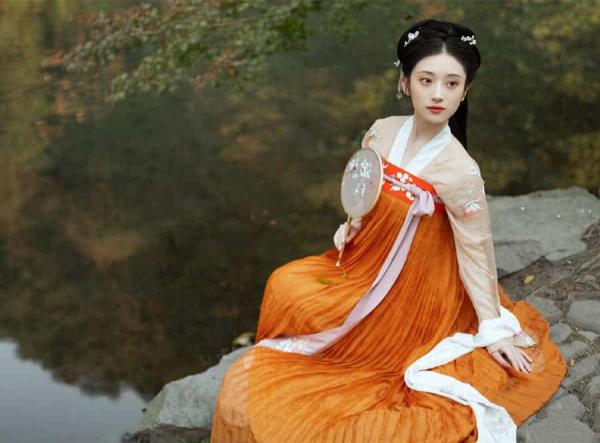
Hanfu History
Han Chinese Clothing, Hanfu originated from the Yellow Emperor’s crown dress, which was prepared by Yao and Shun (the following emperors after Yellow Emperor). It was formed in the Zhou Dynasty, and developed through the Han Dynasty, when a complete system of crown and clothing was created and recorded in the Four Books and Five Classics. Hanfu costumes then also became a part of the sacrifice rituals. Thereafter the emperors of the successive Han dynasties all considered inheriting the clothing of the Han Dynasty as a national event when ascending the throng.
Hanfu has also influenced the entire Han cultural circle through the Chinese legal system. Traditional costumes of some Asian countries, such as Japan, Korea, Vietnam, Mongolia, and Bhutan, all borrowed the characteristics of Hanfu clothing.
What is China's Traditional Clothing - Hanfu?
The denotative meaning of Hanfu is the costume of the whole Han nation. But when talking in the narrower sense, it refers to the dress and etiquette system of the Han Dynasty, thus also named Chinese Han dynasty clothing.
Main characteristics and Basic Shape of Hanfu
Han clothing is made of a piece of cloth with a width of 2 chi 2 cun (about 50cm), and it can be divided into ten parts: collar, lapel, gusset, label, skirt (the full front of a Chinese gown), sleeve, cufflinks, belt, cross straps, and ba (a ceremonial dress in ancient China).
The shapes and systems of Hanfu mainly include "Shen Yi (深衣)" system (the coat and dress are sew up), "Xia Chang (下裳)" system (separating the coat and lower skirt), and "skirt (襦裙)" system (short coat). Among them, the shape of the coat and the skirt was thought to follow the will of heaven, therefore was sacred and the most ceremonious and formal dress for the kings and the royals. The robe (shen yi) was worn by officials and scholar-officials, while the skirt was worn by women. The ordinary working people usually wore short clothes and trousers.
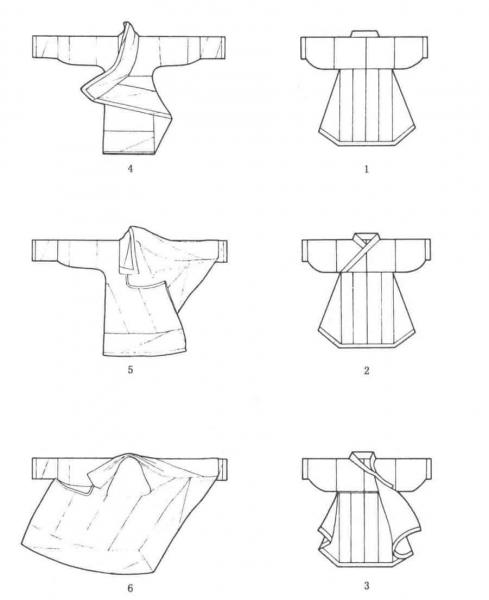
(The photo shows what a shenyi looks like -- the back, front, and how to wear it, from picture 1-6 )
Crossed collar
For a piece of Hanfu, the left front of the garment crosses the right front of the garment across the chest, it naturally forms the cross of the neckline, so it is called "crossed collar". The two straight lines intersecting in the middle of the garment represent the symmetry of traditional Chinese culture, showing a unique charm of fair and justice.
Loose robes and wide sleeves
Compared with the western clothing of the same period, Hanfu has indisputable excellence in human nature. While westerners restrict the development of female body with breastplate and skirt, the wide hanfu costumes allowed the body to stretch freely.
Cross straps and concealed button placket
There are two kinds of hidden buckles: with and without buckles. In general, there is no button for hanfu. Even if buttons are used, the buttons are hidden. The outfit is usually tied with a knot using straps. There are usually wide belts and long belts around the waist, made of the same cloth that was used to make the costume. The belts can be used to make knots, fastening the clothing, or are simply decorations symbolizing power.
Decorative accessories of Hanfu
Hanfu consists of clothes, hair dress, hairstyle, face decoration, shoes, accessories and other accessories to make it an integrated clothing system.
Cloth
The cloth of Hanfu is mainly brocade, silk, cloth, cotton, linen, hemp, yarn, and printing and dyeing cloth. Each cloth is used in different ways. For instances, grass cloth was usually used to make clothes for mourning and sacrifice. Noble dress was made of embroidery cloth, brocade and silk.
Hair dress
The ancient Han men and women tied their hair into a bun, put it on your head after reaching adulthood. Men often wore crowns, scarves or hats to fix hair. Women's buns can be combed into a variety of styles, and wear jewels, step shake, hairpins and other ornaments on the bun. They also wore curtain hat and cover on head.
Decorations for Hanfu
An important feature of the decoration of the Hanfu clothing is that people like to wear jade pendant. There are also other accessories for Hanfu such as knee covering, silk wraps, silk scarf socks, sachets, swords, ivory plate, leather belt, jade belt, etc. The furniture for storing Hanfu was a garment suitcase called yī qiè (衣箧), and the hanger on which Hangfu was hung was called a yī héng (衣桁).
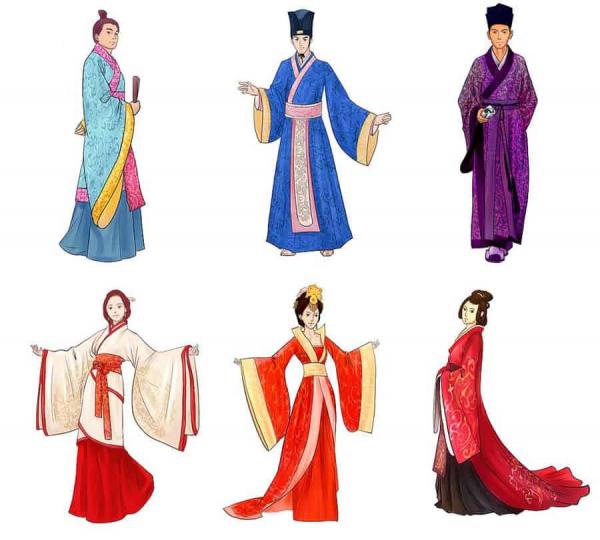
Main Types of Hanfu
Jin Dynasty Style Hanfu
Women's Hanfu clothing of Jin Dynasty style was in accordance with the way of the Qin and Han dynasties, the overall clothing was relatively loose. The upper part of this kind of hanfu looked simple, while the lower part was the long pleated skirt, and looked complicated. Women at that time did not have any special headwear, but would cover the head with a scarf or jade silk.
Tang Dynasty Style Hanfu
There are mainly two types of Hanfu in Tang Dynasty. The first type was the short skirts in the early Tang Dynasty. The main feature of short skirts is that the sleeves of the upper section are small and narrow, and the lower body is matched with a tight skirt, usually with silk ribbon to fasten the skirt.
In the middle and late Tang Dynasty, the clothing strengthened the traditional aesthetic concept of Chinese culture, so loose clothes with big sleeves of Qin and Han Dynasties were popular again, but more elegant and sexier.
Song Dynasty Style Hanfu
The Hanfu in Song Dynasty was mainly based on the old style of the Sui and Tang dynasties. Compared with Tang Hanfu clothing, the skirt of Song Hanfu is narrower and has more pleats. The upper jacket was usually worn at the front of the skirt. Simply put, Hanfu in the Song Dynasty was simple and elegant.
At that time, woman's hair ornaments were also relatively simple. Although they followed the noble hair style of the late Tang Dynasty, but they usually had their hair decorated with only hairpins or flowers, without many expensive ornaments.
Ming Dynasty & Qing Dynasty Hanfu – Mamianqun
Mamianqun or Mamian Qun (马面裙, literally horse face skirt) was the most typical style of female Hanfu clothing during the Ming and Qing dynasties.
The Chinese horse face skirt is made of two large pieces of fabric sewn together by a single waistband, creating an overlapping look. There are four panels of fabric in total called "qunmen" (skirt doors). The outer skirt door is decorated, while the inner skirt door is not. The horse-faced skirt is pleated on the sides, while flat on the front and back. Moreover, the unsewn doors give women enough mobility to ride horses without revealing any underwear.
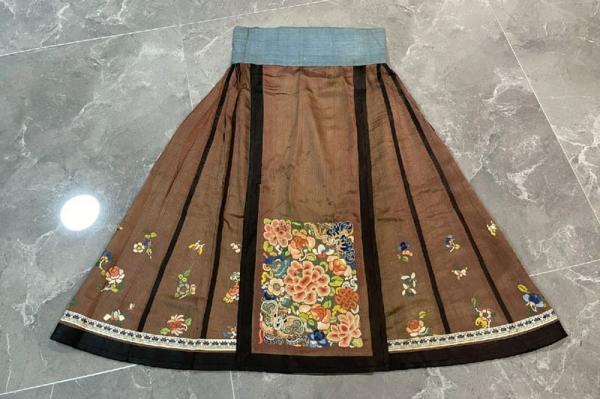
The Mamianqun originated in the Song Dynasty, became popular in the Ming Dynasty, stayed popular during the Qing Dynasty, and was still worn by people in the Republic of China (1912 to 1949). Wearing the traditional Chinese Mamian skirt has become a fashion craze again in recent years, especially among young people.
During the Chenghua period (1465-1487) of the Ming Dynasty, women in the capital were all fond of the Mamian skirt. The texture, decoration, and color of Mamianqun skirts vary significantly among different social classes. The style of Mamianqun was comparatively simple and elegant during the Ming Dynasty.
The Mamianqun gradually developed into the daily attire for women in the Qing Dynasty, and became the iconic skirt style for women of the Qing Dynasty. During this period, the Mamianqun style was more luxurious.
There are several theories about how the horse-face skirt got its name. One theory is that the shape of the Mamianqun looks like the mamian fortress of an ancient city wall in China. Another saying is that the front of the Mamianqun is similar to a long horse face.

Hanfu Thrives Again Today
Wearing hanfu has become a trend in recent years. In the streets, parks, scenic spots, bookstores, and museums, such as the Palace Museum of Forbidden City, you can always see fans of Hanfu wearing this kind of Han Chinese traditional clothing, with their hair tied in a bun.
Previously Hanfu was mainly used for traditional festivals and special occasions. These days, with the popularity of Hanfu and the deepening understanding of Hanfu among the public, especially the youngest, more and more people hope to wear Hanfu in their daily life. Hanfu is one of the many clothes of choice today, just like suits, cheongsam, and tunic suits.
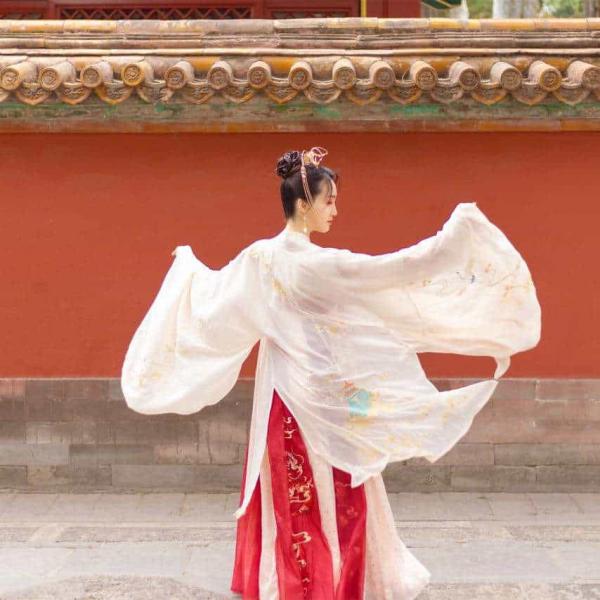
In many cities, such as Beijing, Shanghai, Hangzhou, Chengdu, Hanfu experience shops have emerged one after another, and you can experience a full set of services with a cost-effective price, from booking Hanfu online, choosing Hanfu in the store, wearing Hanfu with the help of expert staff, learning the background culture of Hanfu, to experiencing the full set of makeup and taking photos being dressed in Hanfu.
How to Choose Your First Hanfu
1. Learn more about the traditional form and shape of Hanfu, do not buy the wrong form of Hanfu.
2. Choose a good version of Hanfu that fits your body shape perfectly.
3. The clothing fabric also determines the overall effect.